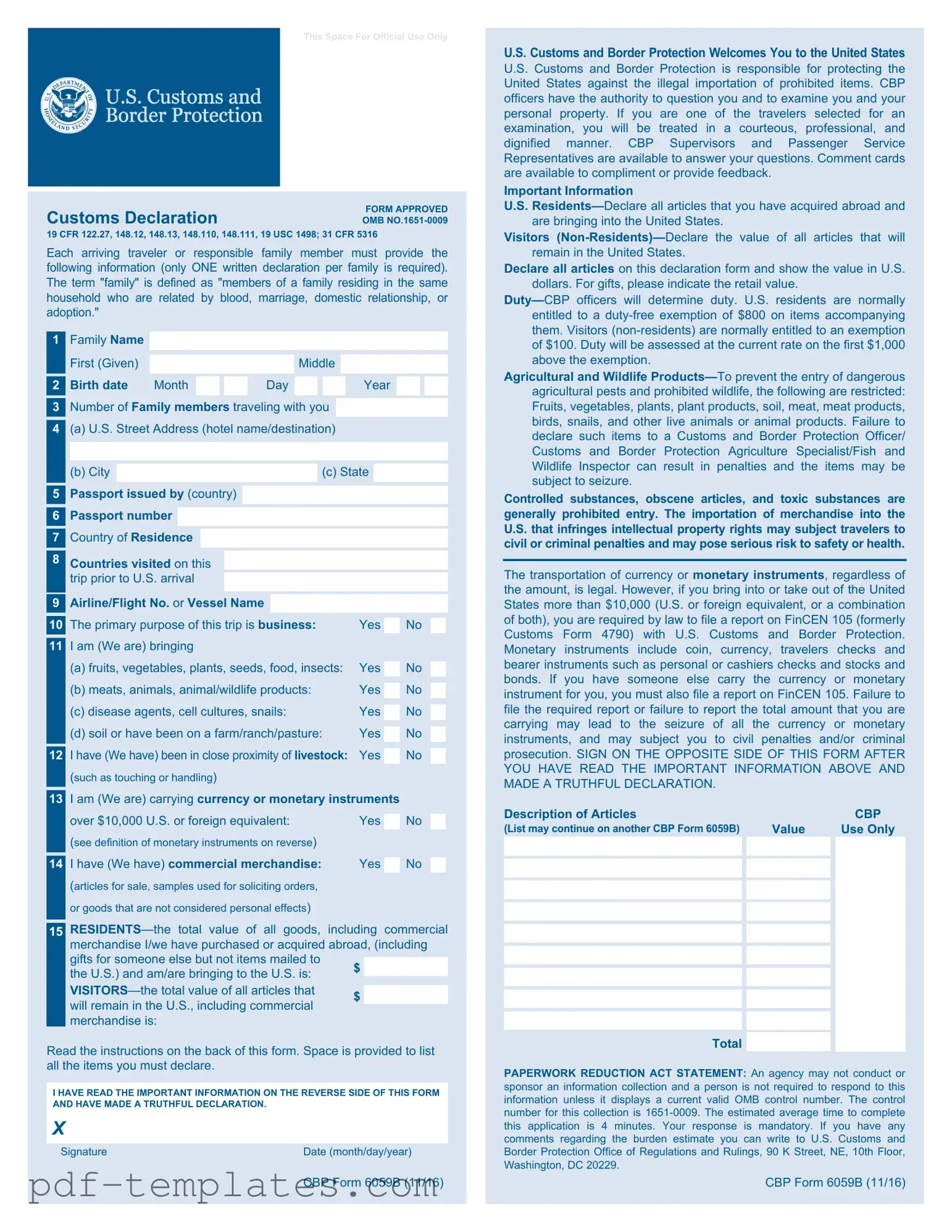The CBP 6059B form, also known as the Customs Declaration form, shares similarities with the CBP 7507 form, which is the In-Bond Application. Both documents are essential for travelers entering the United States. The CBP 7507 is specifically used for goods that are imported under bond, while the 6059B focuses on declaring personal items and currency. Each form requires detailed information about the items being brought into the country, ensuring compliance with U.S. customs regulations. Both documents serve to facilitate the customs process and ensure that travelers are aware of their obligations when entering the U.S.
When dealing with property transfers, understanding the legal documents involved is essential, much like how travelers must complete necessary forms for customs. For instance, a California Quitclaim Deed form facilitates the swift transfer of real estate interests without warranty, often among family. It serves a specific purpose, similar to how travelers must declare items using the CBP 6059B form for compliance. For those seeking more information on Quitclaim Deed procedures, the resource available at formcalifornia.com can provide valuable guidance.
Another document akin to the CBP 6059B is the CBP Form 214, which is used for the Temporary Importation under Bond (TIB). This form is designed for goods that are temporarily brought into the U.S. for a specific purpose, such as repair or exhibition. Like the 6059B, the CBP Form 214 requires detailed descriptions of the items and their intended use. This ensures that customs officials can track the temporary entry of goods and verify that they will be exported again. Both forms aim to streamline the customs process while maintaining regulatory compliance.
The CBP Form 7501, known as the Entry Summary, also bears resemblance to the CBP 6059B. This form is utilized for formal entry of goods into the U.S. and requires comprehensive details about the merchandise, including value and classification. While the 6059B is primarily for personal declarations, the 7501 is focused on commercial imports. Both forms are critical for ensuring that customs duties are assessed accurately and that items comply with U.S. laws. They share the common goal of facilitating lawful entry into the country.
Additionally, the CBP Form I-94, Arrival/Departure Record, is similar to the CBP 6059B in that it is used by travelers entering the United States. The I-94 form documents the arrival and departure of non-U.S. citizens and is essential for tracking their immigration status. While the 6059B focuses on customs declarations, the I-94 is more concerned with immigration details. Both forms must be completed accurately to ensure compliance with U.S. regulations, making them vital for travelers.
Lastly, the CBP Form 3299, Declaration for Free Entry of Unaccompanied Articles, is another document that aligns with the CBP 6059B. This form is used when individuals are sending personal effects or household goods to the U.S. without accompanying them. Similar to the 6059B, the CBP Form 3299 requires a declaration of the items being imported, along with their value and purpose. Both forms are intended to ensure that individuals comply with customs regulations while facilitating the movement of personal property into the country.
